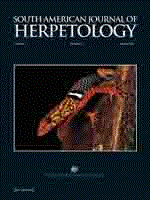We studied the diet of the whiptail lizard Cnemidophorus ocellifer (Spix, 1825) and the relationships between predator size and prey size in a Caatinga area of northeastern Brazil. Lizards (N = 111) were collected during the day through active search. In the laboratory, we measured them and registered the number of ingested items of each prey category to Order, as well as the dimensions and frequencies of each. The main prey category in the C. ocellifer diet was insect larvae and pupae, followed by Orthoptera, Isoptera, Coleoptera and Araneae. Termites (Isoptera) were important only in numeric terms, having negligible volumetric contribution and low frequency of occurrence, an uncommon feature among whiptail lizards. The types and sizes of prey consumed by adult males and females were similar, despite sexual dimorphism in head size. Adults and juveniles ingested similar prey types, but differed in prey size. Maximum and minimum prey sizes were positively correlated with lizard body size, suggesting that in this population individuals experience an ontogenetic change in diet, eating larger prey items while growing, and at the same time excluding smaller ones.
How to translate text using browser tools
1 August 2012
Feeding Habits and Predator-Prey Size Relationships in the Whiptail Lizard Cnemidophorus ocellifer (Teiidae) in the Semiarid Region of Brazil
Raul F. D. Sales,
Leonardo B. Ribeiro,
Jaqueiuto S. Jorge,
Eliza M. X. Freire
ACCESS THE FULL ARTICLE
body size
Caatinga
diet
Lizards
ontogeny
prey size





